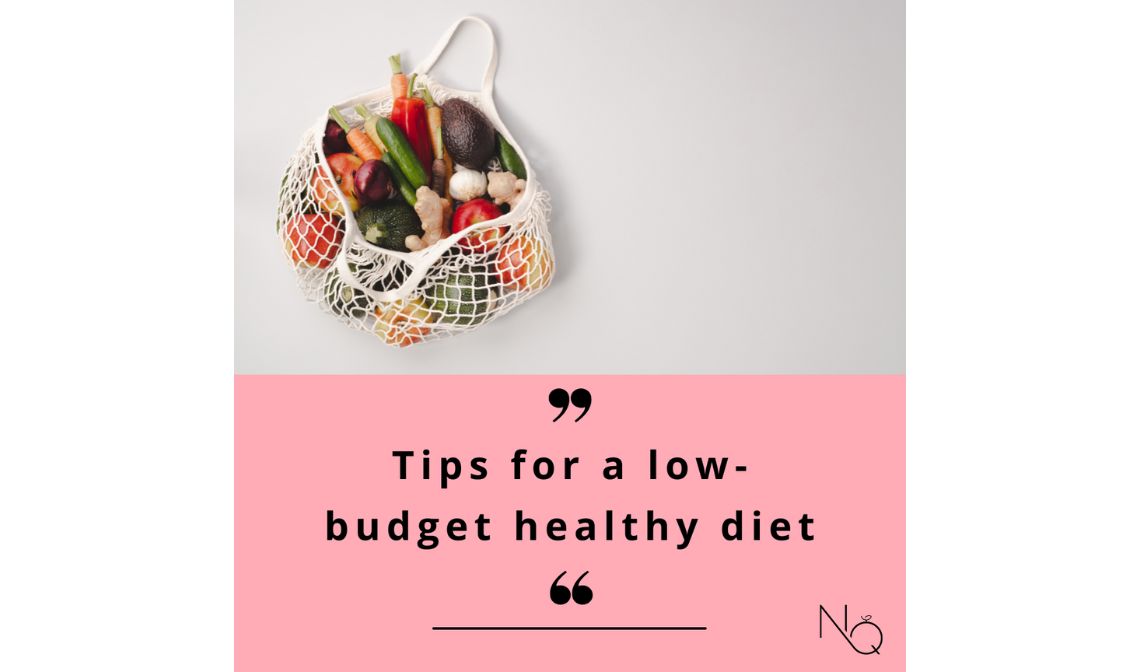Nowadays exist high prices for all goods, but also food. Let's see some ideas for healthy eating that don't cost that much!
1. Choose to follow a Mediterranean diet. The Mediterranean diet is a cheap and sustainable diet model. The products that compose it, i.e. local products that are in season, and excel in taste, nutritional value, and price. At the same time, the Mediterranean diet is plant-based: it contains fruits, vegetables, legumes, cereals, vegetable oils such as olive oil, and less meat and fish, which are usually more expensive products. Finally, this is a dietary pattern that is supported like no other by large prospective studies (7 country studies if you have heard), which highlight its importance for health.
2. Make a supermarket list. With the list, you have the opportunity to calculate what you want to get without forgetting anything and without buying more than you need, which will be thrown away. The list helps you organize yourself and make better food choices. For example, instead of buying fruit at random and running out during the week, you can buy 14 fruits and try to eat two each day, thus improving your eating habits.
3. Store food properly so that it does not go bad. Each food needs different storage conditions. For example, potatoes, legumes, and onions go in a dark place like in the cupboard. Herbs are best preserved if you wash them and put them in a closed food container, between two pieces of kitchen paper. There are many such tips for preserving products that will help you keep them fresh and use them easily and quickly.
4. Don't throw away food. Indeed, you may sometimes forget that food container in the fridge, when the fungi are already having a party. This is a significant waste of food. Try bringing perishable foods further up the shelves so you don't forget to consume them. If you estimate that you will not eat something, you can put it in the freezer, note the date, and have food for next time.
5. Use ingredients you have at home. "This yogurt was nice, but I got tired of eating it every evening...". Instead of "avoiding" this thought, and letting the yogurt go bad, do something else: buy some garlic and make nice tzatziki or, maybe, a frozen yogurt dessert with the nuts you also have forgotten in the pantry. This applies to many products that we have in our kitchen. By buying 1-2 more ingredients at no particular cost, we can make delicious and original meals.
6. Be the "farmer's market" guy. In the farmer's market - although the prices are generally higher - you find cheap options of local and seasonal products (this helps you with goal 1!). Grub your net bag or your linen bag, and, if you're shy, your friend, and go as late as possible because the prices drop even more. If you think this is a habit of the elderly, you are wrong. A walk in Kallidromiou and then coffee with friends will convince you otherwise.
7. Spot the cheap and good places. Sometimes we go shopping and we are abstract. Pay a little more attention to remembering where the best prices are for the products you choose. The best prices may not be in the big supermarkets, as you expected! Keep your eyes open for small neighborhood shops that might provide good quality at a low price.
8. Do your research online. You may find a product you want at a better price online and possibly buy it there. This is true for many easy-to-preserve dry foods.
9. What could be more healthy and low-budget than a nice meal at home? An evening of eating/drinking at a friend's house with a nice balcony can be compared to going out to a good restaurant. You can use ingredients you already have or even get some more special products to cook. What you will make is low-budget and healthier than the outside (I suppose!).
10. Try preparing meals yourself that you would otherwise buy packaged or prepared. Combined with step 5, cooking some meals can save you money since you won't be buying from outside. E.g. instead of a frozen cheese pie, which costs around 6-7 euros, you can try using the yogurt we mentioned, together with cheese, herbs, spices, egg, and foil/flour, and prepare a homemade cheese pie. Plus you can also freeze it and have it any time you want. If you prefer a packaged pie because you like its taste that's ok, but don't forget that we're talking about low-budget and healthy at the same time.
11. Chase and don't chase the deals. Many times the deals are a good choice. However, they can also be misleading. Do not hesitate to take out the mobile phone to calculate if the offer you found is better than getting individual packages from another good company. Additionally, think about whether you need the items with the offer. If you don't need them, you're most likely wasting money on something you'll let go bad, unless you're willing to follow step 5.
12. Take your lunchbox with you. The coffees, snacks, and meals that you buy are quite expensive. Try to have your food container full of healthy options with you. Do a calculation of how much will it cost you if you make your morning coffee at home, have a banana for a snack, and 2-3 pieces of cheese pie (the one you made above!) along with a salad for lunch, instead of what you would buy. If it seems difficult, you can start by following this plan for some meals or some days of the week.
I understand that the times are tough and unprecedented for all of us. However, it is our chance to be creative and think of fresh ideas! Let's take this as an opportunity to follow a good diet, as we always wanted!




